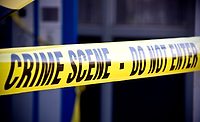In the decade after 9/11, antiterrorist training and strategies have focused on combating the threat from without – al Qaeda and Muslim extremism, with the bulk of our human and technology resources going into public transportation facilities.
The mass shootings of the past year or so, however, have brought about a change in the views of law enforcement, security professionals and the public; encouraging a convergence of antiterrorism and security strategies under the umbrella of criminal activity.
For some time after the World Trade Center attacks, profiling gained acceptance among a frightened public. People figured they knew what terrorists looked like – male, Middle Eastern and under age 40. Even Juan Williams, a respected journalist, famously gave into his fears, stating on air that when he gets on a plane, “If I see people in Muslim garb who identify themselves first and foremost as Muslims I get nervous.”
A spate of terrorist religious extremist attacks reinforced the acceptance of profiling in the public’s mind and kept the focus on existential threats. There were thwarted attacks by Richard Reid, the shoe bomber who in 2002 pled guilty to eight counts of terrorism; Umar Farouk Abdul mutallab, the underwear bomber, who came from a well-heeled Nigerian family; and Faisal Shahzad, who planned a dirty bomb attack in Times Square in 2010.
Despite warnings from the security professionals that profiling does not work and the backlash from violating Constitutional rights, many members of the public were unmoved. The only example that did not fit the preconceived notion of a terrorist was Timothy McVeigh, the 1995 Oklahoma bomber.
Public opinion, however, began to shift on January 8, 2011, when a lone gunman – the deranged Jared Loughner – critically wounded U.S. Rep. Gabrielle Giffords, who was among 13 injured and six people killed at a Tucson shopping mall.
The more recent shootings by James Holmes during the midnight screening of the latest Batman movie in Aurora, Colo., and Michael Page’s murder of six worshippers at the Sikh temple in Oak Creek, Wis., put a new face on terrorism.
“Until these horrific events,” says antiterrorism authority Todd McGhee, “public opinion could easily look the other way when it came racial or ethnic profiling, considering profiling a necessary response to keep us safe even if it did violate our civil rights. The homegrown, lone-wolf terrorist was just not part of the public’s consciousness. These recent shootings created a sense of urgency and a new way of looking at terrorism.”
McGhee, managing partner of Protecting the Homeland Innovations (PHI) in Braintree, Mass., provides antiterrorist training used by security professionals at TSA, AMTRAK, New Jersey Transit, NYPD and other agencies. The 24-year veteran Massachusetts State Trooper also figured prominently in developing new security measures at Logan Airport in Boston before co-founding PHI
(www.phitraining.com) in 2003.
McGhee is quick to point out, “With the recent shootings we’ve experienced, another myth is being dispelled: ‘People who get involved in a terrorist plan are from poor socioeconomic backgrounds or have a troubled family life.’ You cannot count on this; Remember the underwear bomber was the son of one of the richest men in Nigeria. These individuals just want to belong to something and often find a nefarious cause with which to connect.”
Focus on Criminal Behavior
McGhee likes to point out that terror-related death statistics have led to a sense of security complacency. “While terrorist-related deaths have not increased over the past few years, terrorist activity has. Many of the plots are simply thwarted in the early stages through better intelligence and go unreported.”
Says McGhee, “As long as we remained reactionary – placing our emphasis on preventing another 9/11 – we could focus on existential threats that are motivated by an organizational or religious ideology. The lone-wolf attacks – at a shopping mall and movie theater – were a wake-up call. They underscored the need to incorporate all our security resources under the umbrella of criminal behavior and activity. If the actions prove to be terrorism, the terrorism label can be applied later.”
With Loughner, Holmes and Page, their actions clearly earned the terrorism label because their actions were motivated by a political or religious ideology.
In FBI parlance, terrorism is: “The unlawful use of force or violence against persons or property to intimidate or coerce a government, the civilian population, or any segment thereof, in furtherance of political or social objectives.” With these individuals, it was an ideology, though an ideology of their own making.
In the aftermath of these shootings, more private organizations are incorporating the modern antiterrorism tactics PHI has developed over the past decade into their overall security posture. For example, PHI has been training security personnel at MetLife Stadium – the former Meadowlands – as well as at theme parks, hospitals and the hotel industry. PHI is also branching out into places of worship and religious institutions as well.
“In addition to law enforcement professionals, focusing on mitigating risk from any criminal behavior makes it easier to motivate frontline workers; concession stand servers, vendors and ticket takers will be more tuned in to spotting anomalies if they know their observational skills will help them spot trouble ranging from commonplace disorderly conduct to a full-blown a terrorist attack,” says McGhee.
“As an aside, a lot of the focus at sports venues is on detecting contraband liquor. That’s fine, but we can’t be so focused on illegal booze that we miss the guy with the pistol in his waistband,” he adds.
With frontline workers, the DHS inspired phrase “If you see something, say something” has to be more than a catchphrase. It has to be part of the corporate culture. Employees – and patrons as well – not only have to be encouraged to report suspicious behavior; they have to know that when they alert a security official, they will be taken seriously. The information has to be channeled up the chain of command, and procedures have to be in place to make sure that threat report is responded to appropriately.
For its training, PHI taps into the security and law enforcement professionals’ sixth sense of the baseline activity in any situation. Just like the cop on the corner of yesterday, a transit authority police officer, for example, tunes into the human activity on the platform. The train arrives, people rush to board, and the platform empties. PHI training sharpens that awareness so that anomalies come into sharper focus. The individual who seems trancelike, sweaty and not seeming to want to get anywhere are the indicators of trouble. Again behavior – not religion or ethnicity – is the giveaway.
In addition to behavioral profiling, PHI teaches a technique called tactical dialogue in which police or security officials ask innocuous questions.
“If a stranger has to think about answering a simple questions like, ‘What brings you here to our facility today?’ or ‘Which section are you seated in for today’s game?’ or “Which airline are you traveling on?’ it’s a sign of trouble,” says McGhee. “We look for subconscious physical responses people cannot hide. It’s a like a tell in a poker player.”
At an airport, McGhee explains, “These kinds of questions should not evoke physiological changes such as stammering, averted eyes, a flushed face or profuse sweating. Of course we have to be aware that medical conditions, language or cultural barriers, or poor verbal skills might come into play. We account for this possibility by looking for consistency during the interaction to separate the anxiety-prone individual from someone who is anxious because they are plotting an attack. In a sense, we are reviving the lost art of policing – where the beat cop knew when something in the neighborhood just didn’t look right and interacted with the people on his beat.”
PHI’s behavioral profiling training is based on the acronym GAMMA, which stands for Groupings, Articles, Mood, Movement and Attire.
“Under Groupings, we train students to look at individuals and their relationship with the people around them. If they are alone, how do they relate to the crowd? If with others, does the behavior include coded conversations, or hand gestures? Does a group arrive together and subsequently pretend to be strangers?” We train our students to look for mission oriented behavior, McGhee says.
Suspicious Articles can involve anything that is inappropriate for the occasion such as heavy backpacks in a stadium or seeing someone in a line at the airport who is overly possessive of his or her items – absentmindedly probing a suitcase as if testing an electronic system. A PHI instructor once told a group of trainees that he can go up to a person he suspects of having a weapon and casually mention, “That firearm looks kind of heavy.” The person invariably feels for the hidden pistol.
Movement that does not fit the situation can range from not going with the flow of the crowd, appearing to be taking orders on a cellphone or abruptly leaving the grandstands in the bottom of the ninth with bases loaded.
“With Mood we look for nervousness, despondency, a disconnection with surroundings, and Attire means being aware of anything from atypical bulges in clothing to a ski parka in the middle of August,” says McGhee.
When we treat terrorism as being separate from criminal acts, it’s easy to see how an institution can let down its guard on the antiterrorism front. As professionals, we need to remind ourselves and our organizations that while the number of terrorist-related deaths has not increased in the recent past, the number of terrorist plots has. Many of these have been thwarted in the early stages and went unreported. The statistics do not express the ever-present risk.
We do, however, increase our watchfulness when we incorporate antiterrorism strategies with a need to mitigate the risk of all criminal threats. Says McGhee, “Since criminal behavior is perceived to be more commonplace than terrorism, we immediately become more vigilant, we reduce incidents of and acceptance of racial, ethnic and religious profiling, and we become more proactive by broadening our scope of our security measures to include any place where people gather.”
And that works to make all of us safer.
This article was previously published in the print magazine as "Terrorism or Criminal Activity – Training Security like Beat Cops."
Safeguarding Employees from Workplace Violence |
|
Chances are that everybody, at some point in their career, will witness some form of workplace violence, as the term is defined by The National Institute of Occupational Safety and Health (NIOSH). Whether the violence consists of offensive language and threatening body language or physical attacks, employees and employers alike have to be prepared for these unfortunate events.
Prevention and Training The best hope for reducing workplace violence is to learn to see the warning signs and understand that anybody can be a victim. Security officers should be trained on identifying the physical indicators of someone with violent potential. Human Resources departments have to keep up to speed on how to give pre-employment screenings in attempts to identify applicants that seemed poised towards this tendency. In addition to such measures, all employees should be trained to look for universal signals, as prescribed by NIOSH, which might be a prelude to violence: • body language • verbal expression of anger • signs of drug use • signs of psychological trauma Not only is training to recognize the signs of potential violence vital to environmental health, but NIOSH strongly recommends employees should also be trained on how to respond when confronted with potential violence: • stay calm • don't match threats • don't give orders • acknowledge the person's feelings
Preparing the Workplace Preparing employees for the potentials of workplace violence should only be part of an employer's strategy. Being ready to handle an incident of physical violence is also a necessary step. First of all, healthcare facilities should make sure an adequate security and surveillance system is installed. Preventative measures such as card access systems and metal detectors help ensure that employees or visitors can't bring in weapons or go anywhere that could be detrimental to patient care. A software system that permits and restricts access quickly and efficiently will aid in situations where evasive maneuvers are needed or when ex-employees must have privileges quickly revoked. Depending on the size and services of the facility, environmental design features that include designated areas such waiting rooms and visitor centers can help segment traffic in high-stress situations. Other tips include making sure the openings are working properly and up to code, fixing those that aren't, and ensuring the workspace is free of objects that could be used as weapons.
Coping Unfortunately, despite all the planning, designing, training and communication, workplace violence can still errupt. If and when the situation occurs, employees must learn how to cope. Reporting and documenting the incident is a necessary first step, but having the ability to offer grief counseling and group sessions can go a long way in helping them recover from the incident and remain happy, productive team members, wanting a long-term future with their employer. Having these plans implemented in advance also helps employees recover because they'll already know that there is a support system they can use.
Planning the Stages No organization can fully prevent workplace violence from happening. However, understanding the stages of human interaction that occur during an attack will better prepare workplaces during the event as well as its aftermath. With this knowledge in hand, workplaces have better chances of not allowing such incidents to compromise their integrity. |





